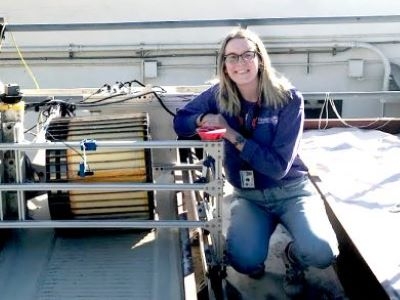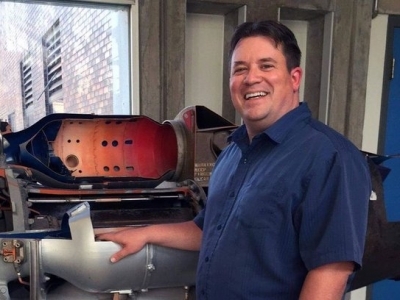It is a well-known fact that space exploration has always required extensive use of robotics. According to Carleton Aerospace professor and researcher, Dr. Jurek Sasiadek, as space missions grow not only in duration but also in distance from Earth, it is inevitable that unmanned missions will become more and more frequent.
Unmanned space missions were a central theme at the 3rd biennial Conference on Aerospace Robotics, a meeting of international space experts held in Warsaw at the Space Research Centre (PAN) last November. The conference narrowed in on two main fields of increasing significance in space exploration: space robotics and Unmanned Aerial Vehicles (UAVs).
As General Chair and Program Chair of the conference, Sasiadek oversaw the selection of plenary lecturers and research papers presented at the conference. Finalists from the 107 paper submissions will be published in Geoplanet: Earth and Planetary Sciences, (Springers).

Corvus UAV built by undergraduate and graduate students at Carleton University.
One of the most pressing key issues that surfaced through the lectures was how to clean the Earth’s higher orbits from the massive amount of debris currently scattered there. It was agreed that robotics may be the best and only suitable methodology. Regarding UAVs, a central challenge discussed was the incongruency between the demand for the technology and the lack of regulation for it.
Dr. Sasiadek reveals the use of robotics and UAVs on space missions is two-fold. “The first encompasses autonomous robots that complete tasks on their own, while the second sees astronauts utilizing remotely operated telerobotics without leaving their pressurized environments.” He goes on to say that “although robots can be controlled remotely, due to increasingly challenging space missions, robots used in exploration must become more autonomous and capable of performing complex tasks without human participation.”

Carleton University was technical lead on the development of the Canadian Space Agency’s $2.3 M “Kapvik” rover.
Yet creating autonomous, intelligent robots and UAVs to send on space missions is cutting edge science and more easily said than done. Deploying this technology on earth is one thing; however, sending them into space where they contend with zero gravity, freezing temperatures, and flying space debris is quite another. All of which provide complex challenges for control system design.
These, the issues and challenges at the forefront of space robotics, make clear the need for experts to come together and collaborate on innovative solutions. And while the innately human desire to explore will continue to lead us to new frontiers, space robotics will provide us with a safer way to discover space into the future.



